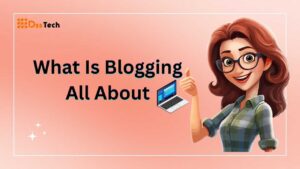Introduction
In this post, we are going to understand, how content marketing drives sales for your business. Content marketing is a strategy used by businesses to attract and engage customers by creating and sharing valuable content. Instead of directly promoting products or services, content marketing focuses on providing useful information that helps people solve problems or learn something new. This approach builds trust and establishes a relationship with the audience, making them more likely to buy from the business in the future.
In today’s digital world, people have access to a vast amount of information online. They often look for advice, solutions, or insights before making a purchase. By offering helpful and relevant content, businesses can meet these needs and stand out from their competitors. Content marketing can take many forms, such as blog posts, videos, social media updates, and more. Each type of content serves a different purpose and can reach potential customers in various ways.
This article explores ten unique ways that content marketing can drive sales. These methods go beyond the common tips you might find elsewhere, offering fresh and practical ideas to help your business grow. Whether you’re new to content marketing or looking to improve your strategy, these insights will show you how to effectively use content to boost your sales.
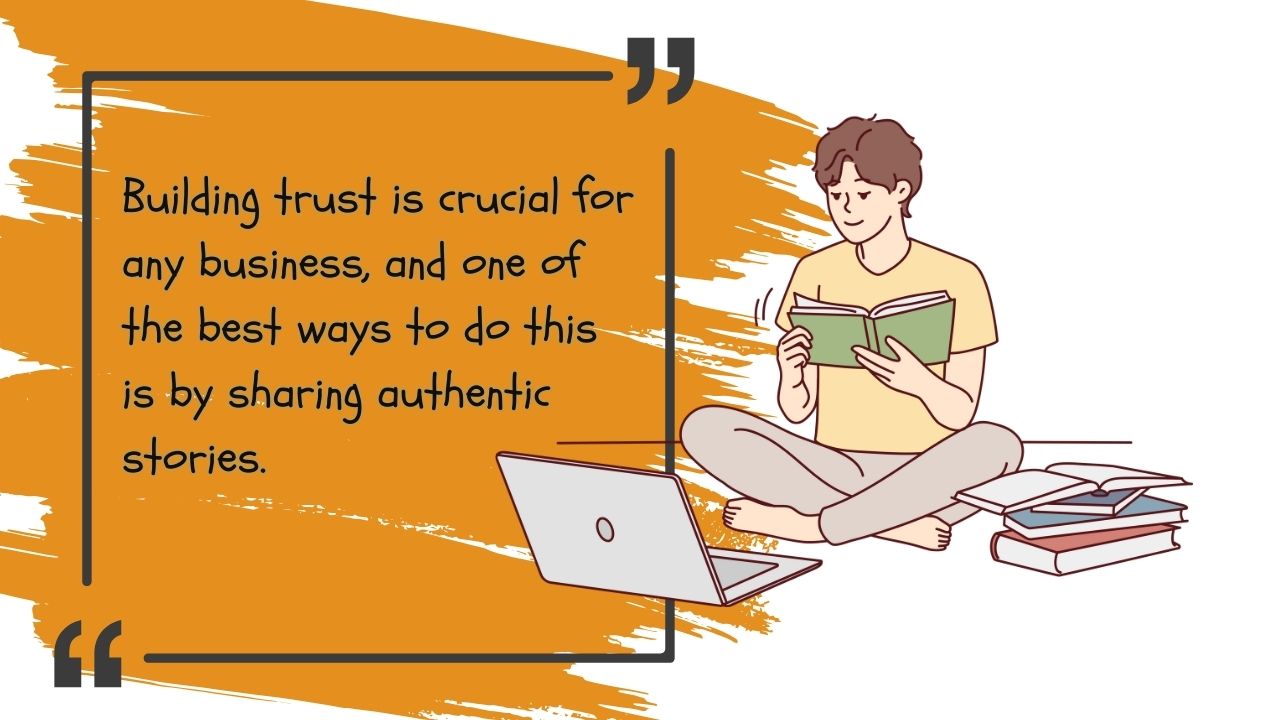
Building Trust with Authentic Stories
Building trust is crucial for any business, and one of the best ways to do this is by sharing authentic stories. Authentic stories are real-life experiences or honest accounts related to your business, team, or customers. These stories can make your brand feel more human and relatable, helping potential customers feel a connection with you.
For example, you can share stories about how your company started, the challenges you faced, and how you overcame them. Introduce your team members and their journeys. This transparency shows that there are real people behind the brand, working hard and caring about their customers.
Another effective approach is to highlight customer stories. Share testimonials and case studies where customers talk about their positive experiences with your product or service. When potential buyers see that others have benefited from what you offer, they are more likely to trust you and feel confident in making a purchase.
By consistently sharing these authentic stories, you build a narrative that people can relate to and believe in. This trust is essential because people prefer to buy from brands, they feel are honest and reliable. Authentic storytelling makes your brand more approachable and trustworthy, which ultimately drives sales.
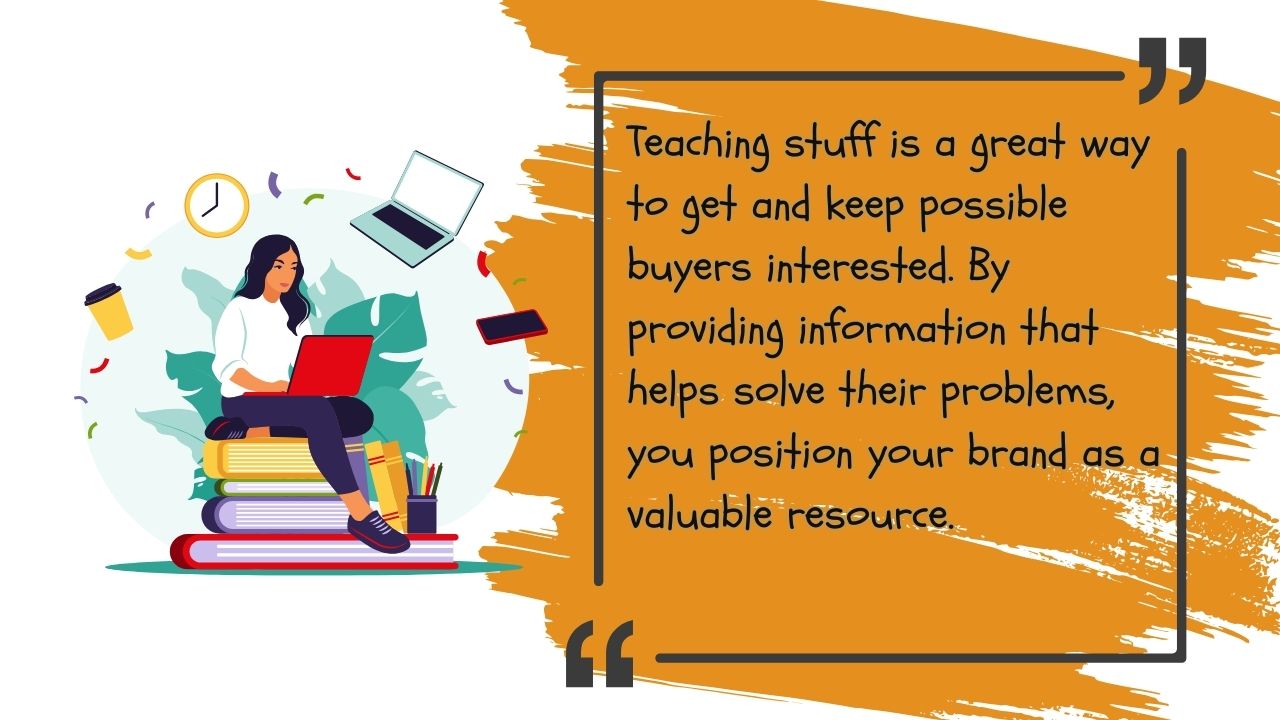
Educational Content that Solves Problems
Teaching stuff is a great way to get and keep possible buyers interested. By providing information that helps solve their problems, you position your brand as a valuable resource. People often search the internet for answers to their questions or solutions to their challenges. When your content provides these answers, it builds trust and draws people to your business.
For instance, if you sell gardening supplies, you could create blog posts or videos on topics like “How to Start a Vegetable Garden” or “Common Plant Diseases and How to Treat Them.” This type of content helps people learn and solve issues they face in their gardening efforts. As they find your advice helpful, they are more likely to consider your products for their needs.
Educational content can take many forms, such as how-to guides, tutorials, infographics, and webinars. Each type of content can cater to different learning styles, ensuring a broader reach.
By consistently offering valuable information, you demonstrate your expertise in your field. This establishes your brand as a knowledgeable and reliable source, making potential customers more likely to trust you and choose your products or services when they are ready to make a purchase.
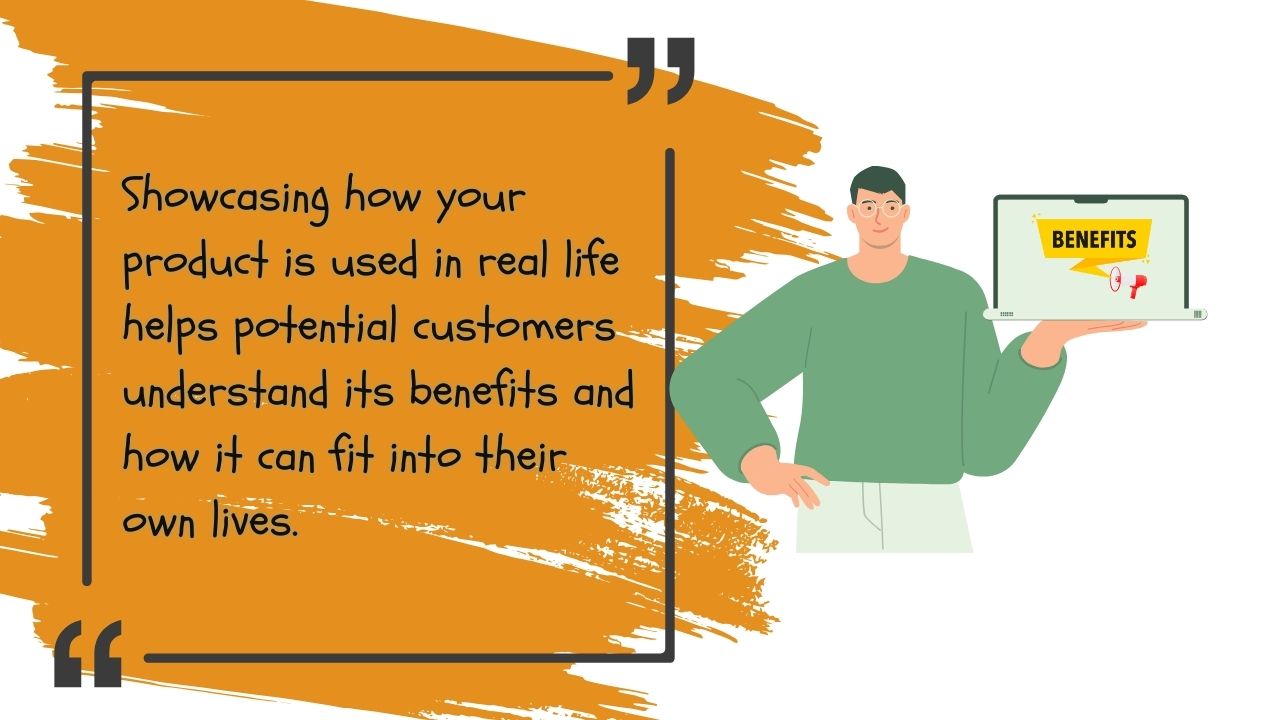
Showcasing Product Uses and Benefits in Real Life
Showcasing how your product is used in real life helps potential customers understand its benefits and how it can fit into their own lives. When people see practical examples of how a product works and the positive impact it has, they are more likely to be convinced to make a purchase.
One effective way to do this is through case studies. Case studies are detailed stories about how actual customers used your product to solve a problem or improve their situation. They highlight specific benefits and results, showing potential buyers what they can expect.
Another approach is to share testimonials and reviews from satisfied customers. These can be in the form of written reviews, video testimonials, or social media posts. When people hear directly from others who have had a good experience with your product, it builds credibility and trust.
User-generated content, such as photos or videos posted by your customers using your product, is also very impactful. This content is authentic and relatable because it comes from real people, not the brand itself.
By consistently showcasing real-life uses and benefits of your product, you make it easier for potential customers to see its value. This practical demonstration can significantly influence their buying decisions, driving more sales for your business.
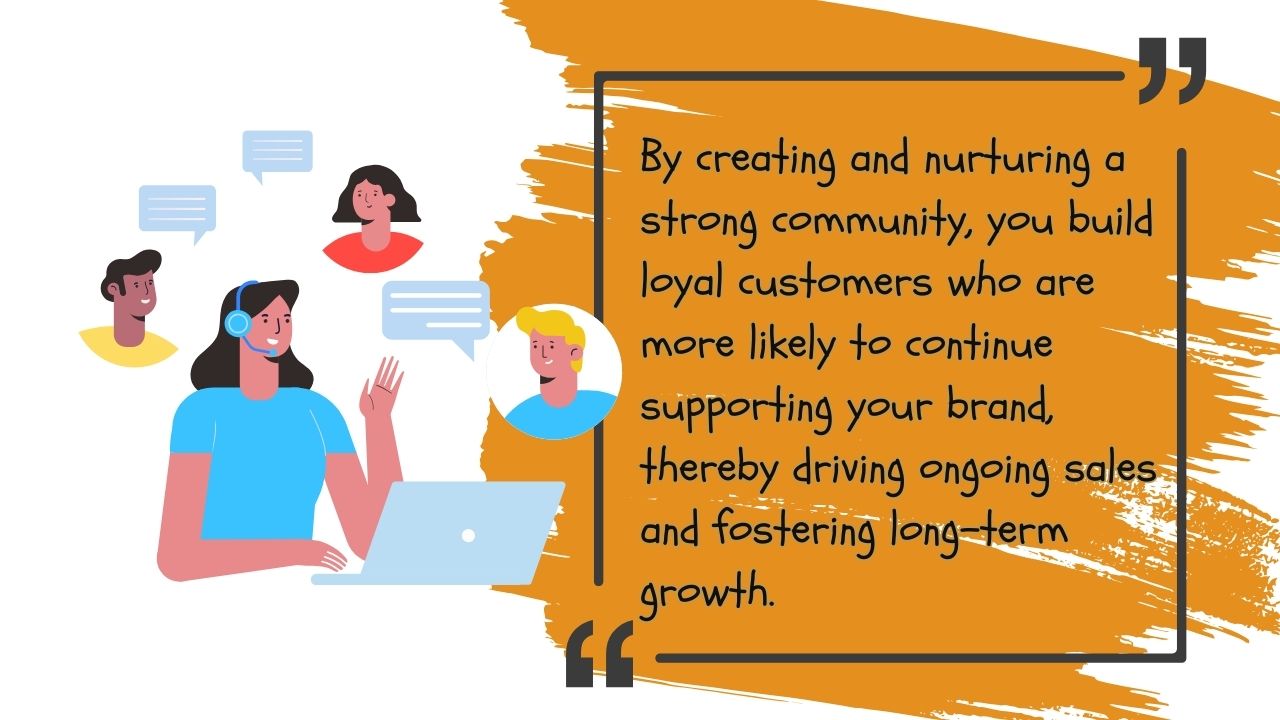
Creating a Sense of Community
Creating a sense of community around your brand can significantly boost customer loyalty and drive sales. When customers feel like they are part of a community, they develop a deeper connection with your brand, making them more likely to make repeat purchases and recommend your products to others.
One way to build a community is by starting and maintaining active social media groups or online forums where customers can interact with each other and with your brand. These platforms allow people to share their experiences, ask questions, and get advice. For example, a fitness brand might create a Facebook group where members can share workout tips, success stories, and encouragement.
Hosting events, either online or in person, is another effective strategy. Webinars, live Q&A sessions, or workshops can bring your customers together and provide them with valuable content and direct interaction with your brand. These events help strengthen the sense of belonging and engagement within your community.
Encouraging user-generated content, like photos, videos, and stories from your customers, can also enhance the community feeling. Featuring this content on your website or social media not only shows appreciation for your customers but also fosters a sense of pride and inclusion.
By creating and nurturing a strong community, you build loyal customers who are more likely to continue supporting your brand, thereby driving ongoing sales and fostering long-term growth.
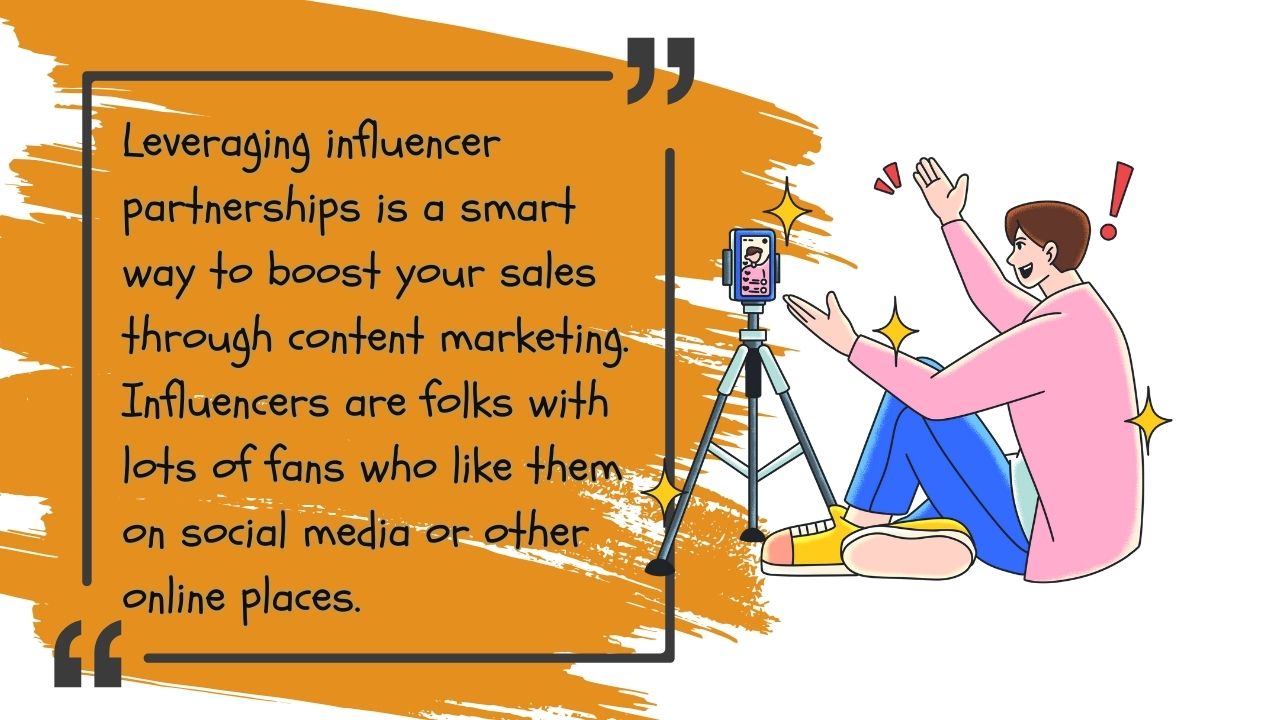
Leveraging Influencer Partnerships
Leveraging influencer partnerships is a smart way to boost your sales through content marketing. Influencers are folks with lots of fans who like them on social media or other online places. When they talk about your product or service, their followers pay attention.
To make the most of influencer partnerships, start by finding influencers who align with your brand and target audience. For example, if you sell beauty products, partnering with a popular beauty blogger or makeup artist can be very effective. The key is to choose influencers whose followers are likely to be interested in what you offer.
Once you’ve identified the right influencers, collaborate with them to create content that showcases your product. This could be in the form of reviews, tutorials, unboxing videos, or even just social media posts. The content should feel natural and authentic, reflecting the influencer’s genuine experience with your product.
Influencers already have the trust of their followers, so their endorsement can significantly boost your credibility. When followers see someone they trust using and recommending your product, they are more likely to consider buying it themselves.
By leveraging influencer partnerships, you can reach new audiences, build trust, and drive more sales. This approach not only enhances your content marketing strategy but also taps into the influencer’s established community to promote your brand effectively.
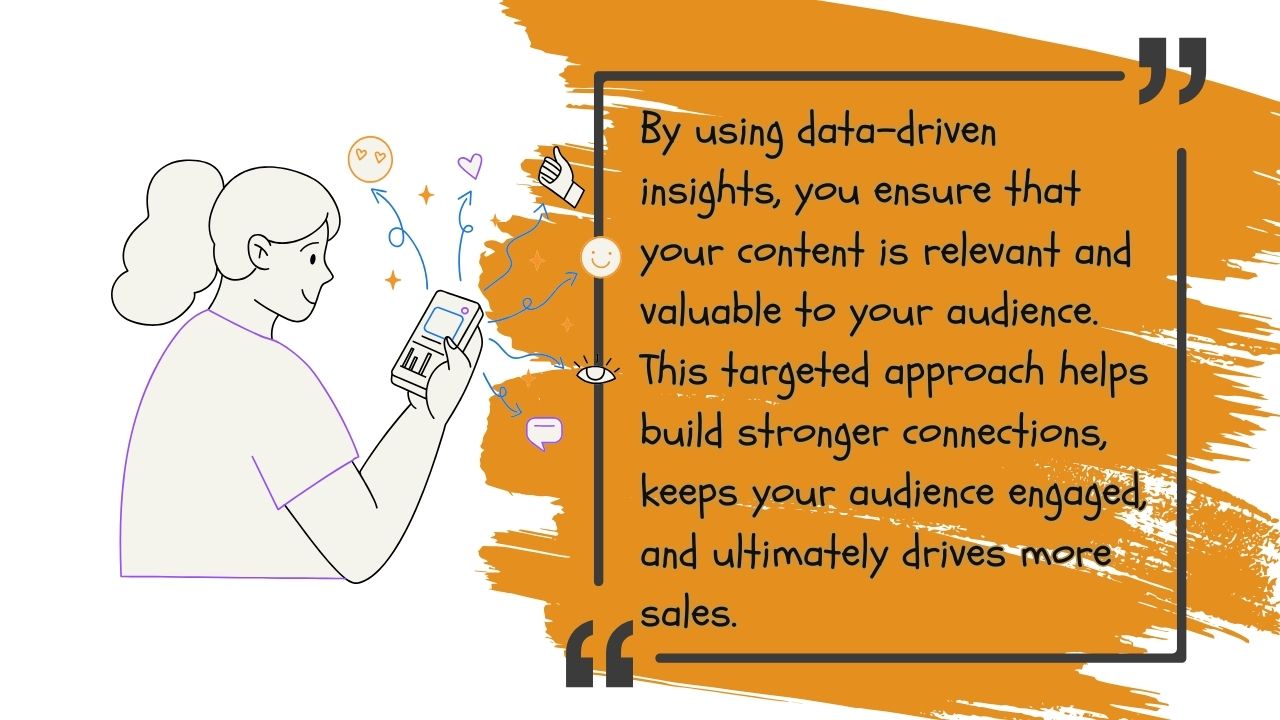
Using Data-Driven Insights to Tailor Content
Using data-driven insights to tailor your content means relying on data to understand what your audience wants and needs. This approach helps you create content that resonates with your audience, increasing the chances of engaging them and driving sales.
Start by collecting data from various sources such as website analytics, social media metrics, and customer feedback. These data points can show you which topics are popular, what types of content your audience prefers (like videos, blogs, or infographics), and the times they are most active online.
For example, if you notice that your audience engages more with how-to videos than with blog posts, you can focus more on creating video content. Or if data shows that a particular blog post on a specific topic is getting a lot of traffic, you can create more content on similar topics.
Personalization is another powerful aspect of using data. You can tailor content to different segments of your audience based on their behavior, preferences, or demographics. For instance, new visitors might receive introductory content about your brand, while returning customers might get more detailed content about product updates or advanced tips.
By using data-driven insights, you ensure that your content is relevant and valuable to your audience. This targeted approach helps build stronger connections, keeps your audience engaged, and ultimately drives more sales.
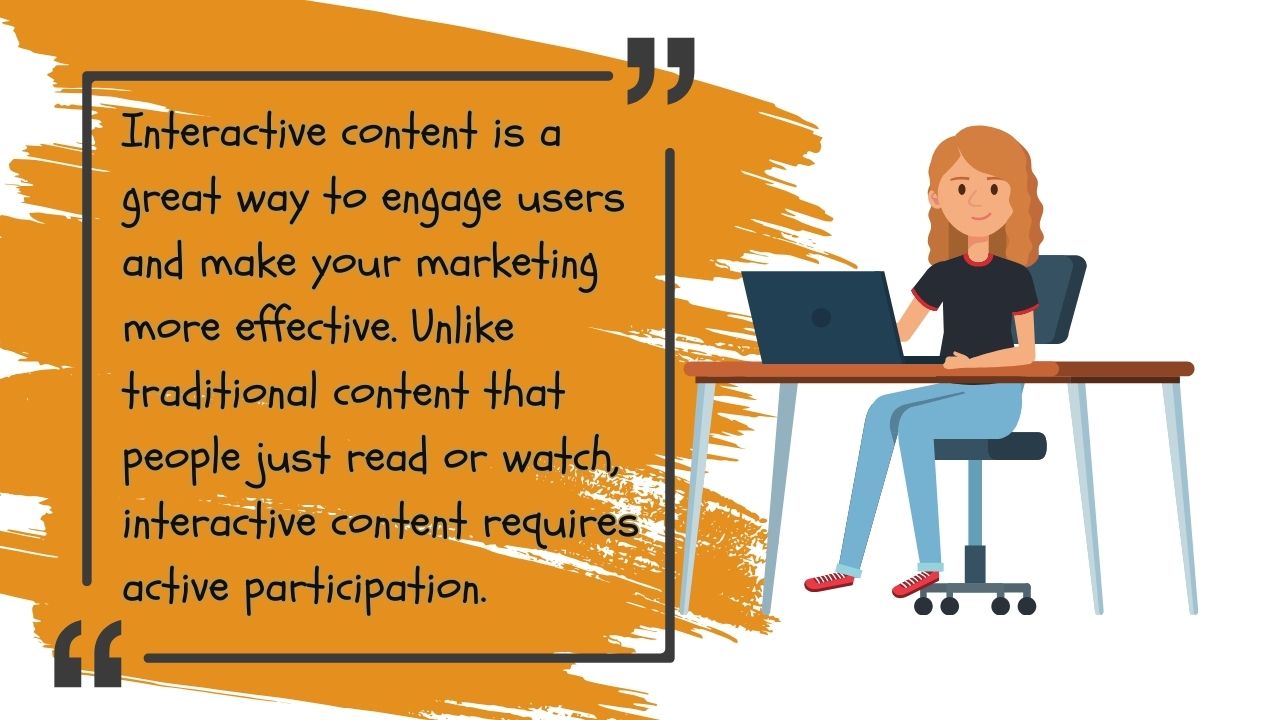
Interactive Content to Engage Users
Interactive content is a great way to engage users and make your marketing more effective. Unlike traditional content that people just read or watch, interactive content requires active participation. This makes it more engaging and memorable.
There are many types of interactive content you can create. Quizzes are very popular because they are fun and people love to test their knowledge or find out something new about themselves. For example, if you sell skincare products, you could create a quiz like “Find the Perfect Skincare Routine for Your Skin Type.” This not only engages users but also provides them with personalized product recommendations.
Polls and surveys are another form of interactive content. They allow you to ask your audience questions and get instant feedback. This can help you understand their preferences and improve your products or services based on their input.
Interactive infographics and calculators are also effective. For example, a financial services company might offer a calculator to help users figure out their retirement savings needs. This type of tool provides immediate value to the user and demonstrates your expertise.
By using interactive content, you keep your audience engaged longer and make the experience more enjoyable for them. This increased engagement can lead to higher conversion rates and more sales, as users are more likely to remember and trust your brand.
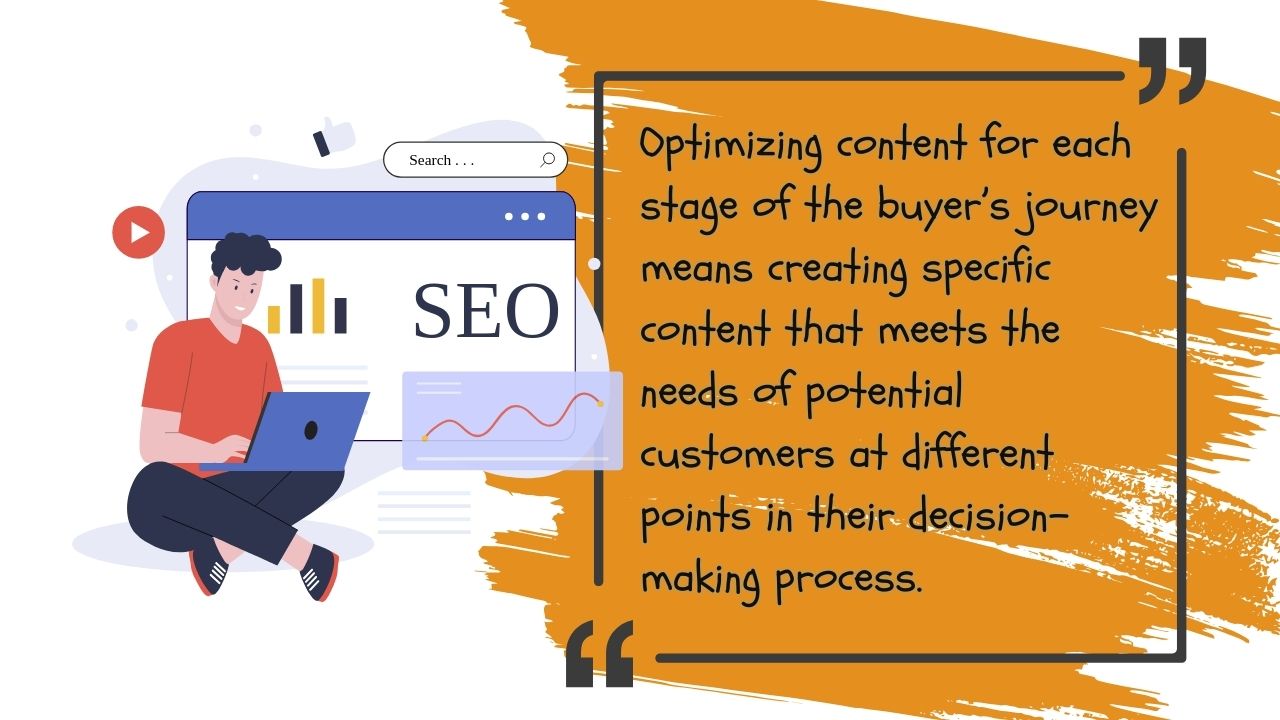
Optimizing Content for Each Stage of the Buyer’s Journey
Optimizing content for each stage of the buyer’s journey means creating specific content that meets the needs of potential customers at different points in their decision-making process. The buyer’s journey typically includes three stages: awareness, consideration, and decision.
In the awareness stage, potential customers realize they have a problem or need. They are looking for information to understand their issue better. At this stage, your content should be educational and informative. Blog posts, eBooks, and videos that explain common problems or provide general information are very effective. For example, if you sell fitness equipment, you could create a blog post titled “Top 10 Benefits of Regular Exercise.”
In the consideration stage, potential customers are comparing different solutions to their problems. They are looking for more detailed information about their options. Here, you should provide content that helps them evaluate your product or service. This could include product comparison guides, case studies, and in-depth articles. For instance, a guide comparing different types of home gym equipment would be useful for someone considering setting up a home gym.
In the decision stage, potential customers are ready to make a purchase. They need content that helps them feel confident about their choice. Testimonials, reviews, and special offers can be very persuasive at this stage. A video testimonial from a satisfied customer or a limited-time discount can motivate them to buy from you.
By optimizing your content for each stage of the buyer’s journey, you can effectively guide potential customers from awareness to purchase. This tailored approach ensures you provide the right information at the right time, making it easier for them to choose your product or service, ultimately driving more sales.

Highlighting Customer Success Stories
Highlighting customer success stories is a powerful way to build trust and credibility with potential customers. These stories showcase real-life examples of how your product or service has helped people solve their problems or achieve their goals.
Customer success stories come in various forms, such as testimonials, case studies, or reviews. Testimonials are short quotes or statements from satisfied customers expressing their satisfaction with your product or service. For example, “I love how this software simplifies my workflow and saves me hours every week!”
Case studies provide more detailed insights into how a customer used your product or service to overcome specific challenges and achieve success. They typically include information about the customer’s situation before using your product, the solution you provided, and the results they achieved. These detailed stories help potential customers see how your offering can address their own needs or pain points.
Reviews are another form of customer success story, often found on platforms like Google, Yelp, or social media. Positive reviews from happy customers serve as social proof, reassuring potential buyers that others have had a good experience with your brand.
By highlighting customer success stories, you demonstrate the value and benefits of your product or service tangibly. This builds confidence and trust with potential customers, making them more likely to choose your brand over competitors and ultimately driving sales.
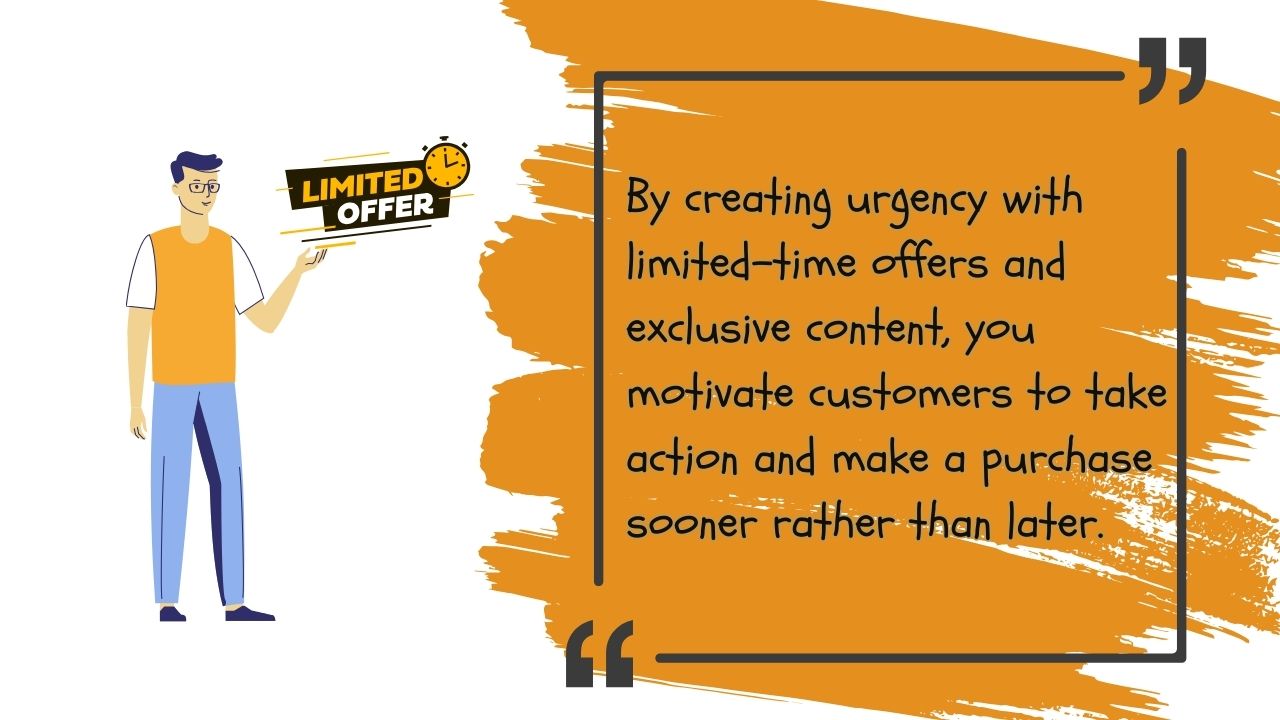
Creating Urgency with Limited-Time Offers and Exclusive Content
Creating urgency with limited-time offers and exclusive content is a clever strategy to encourage people to make a purchase quickly. When customers feel like they might miss out on a special deal or exclusive content, they are more motivated to act fast.
Limited-time offers are discounts or promotions that are only available for a short period. For example, “Get 20% off all products this weekend only!” This makes people feel like they need to act fast because they have to buy before the discount goes away.
Exclusive content is content that is only available to a select group of people, such as subscribers or members. This could be early access to new products, behind-the-scenes content, or special tips and tricks. By offering exclusive content, you make your audience feel special and valued, encouraging them to stay engaged with your brand.
Combining limited-time offers with exclusive content can be particularly effective. For example, you could offer a discount code that’s only available to subscribers for a limited time. This incentivizes people to not only make a purchase quickly to get the discount but also to join your email list to access future exclusive offers.
By creating urgency with limited-time offers and exclusive content, you motivate customers to take action and make a purchase sooner rather than later. This can lead to increased sales and revenue for your business while also rewarding your loyal customers with special benefits.
Conclusion
In conclusion, content marketing is a powerful tool for driving sales by building relationships, providing value, and guiding potential customers through their buying journey. By implementing the unique strategies outlined in this article, businesses can effectively leverage content to attract, engage, and convert leads into customers.
From building trust with authentic stories to creating urgency with limited-time offers, each strategy plays a vital role in the content marketing ecosystem. Through educational content, interactive experiences, and personalized messaging, brands can connect with their audience on a deeper level, addressing their needs and concerns at every stage of the buyer’s journey.
Furthermore, by highlighting customer success stories and fostering a sense of community, businesses can cultivate loyal customers who not only make repeat purchases but also advocate for the brand to others.
In today’s competitive landscape, content marketing continues to evolve, offering endless opportunities for businesses to stand out and drive meaningful results. By staying informed, adapting to changing trends, and consistently delivering valuable content, businesses can position themselves for long-term success in the dynamic digital marketplace.



